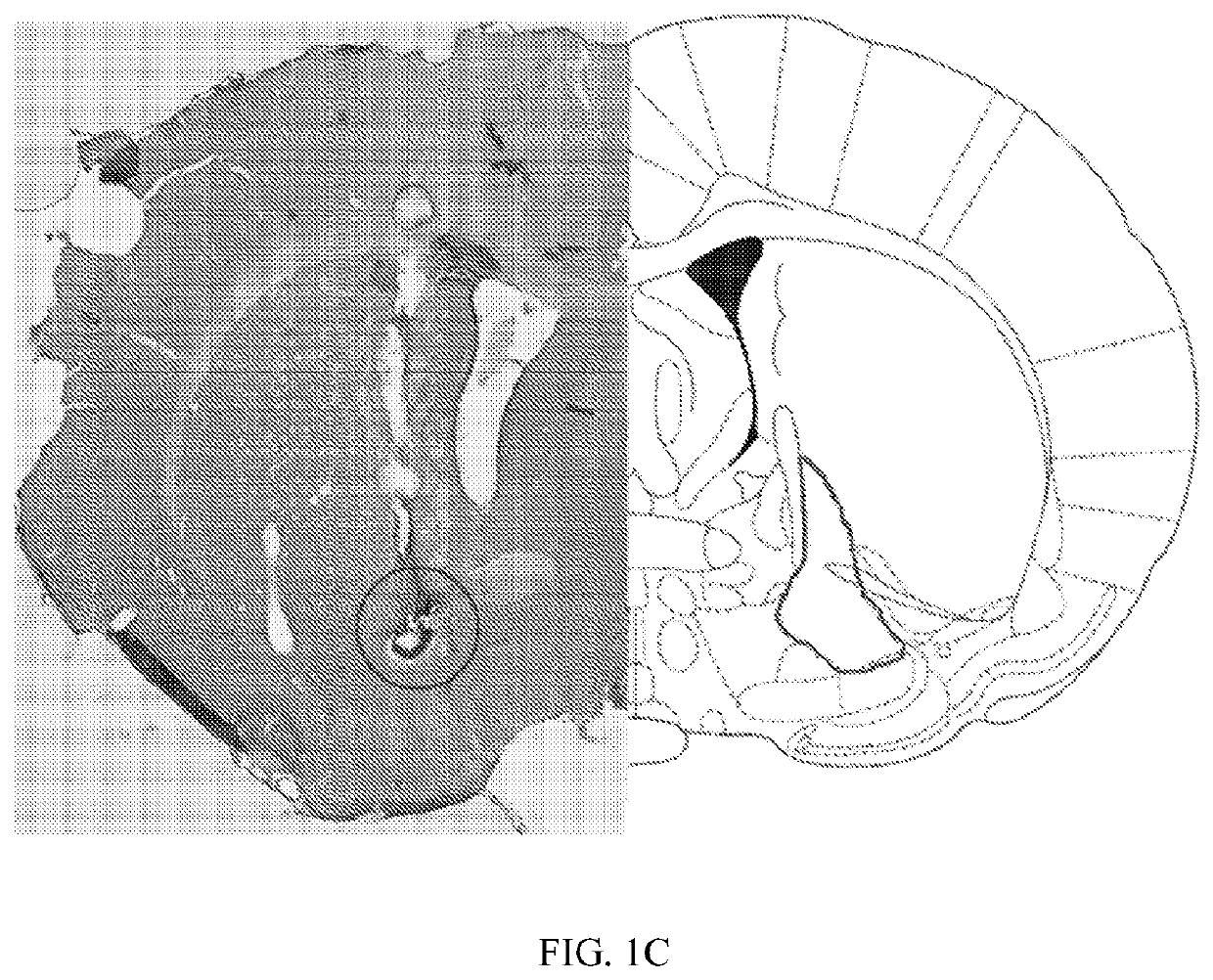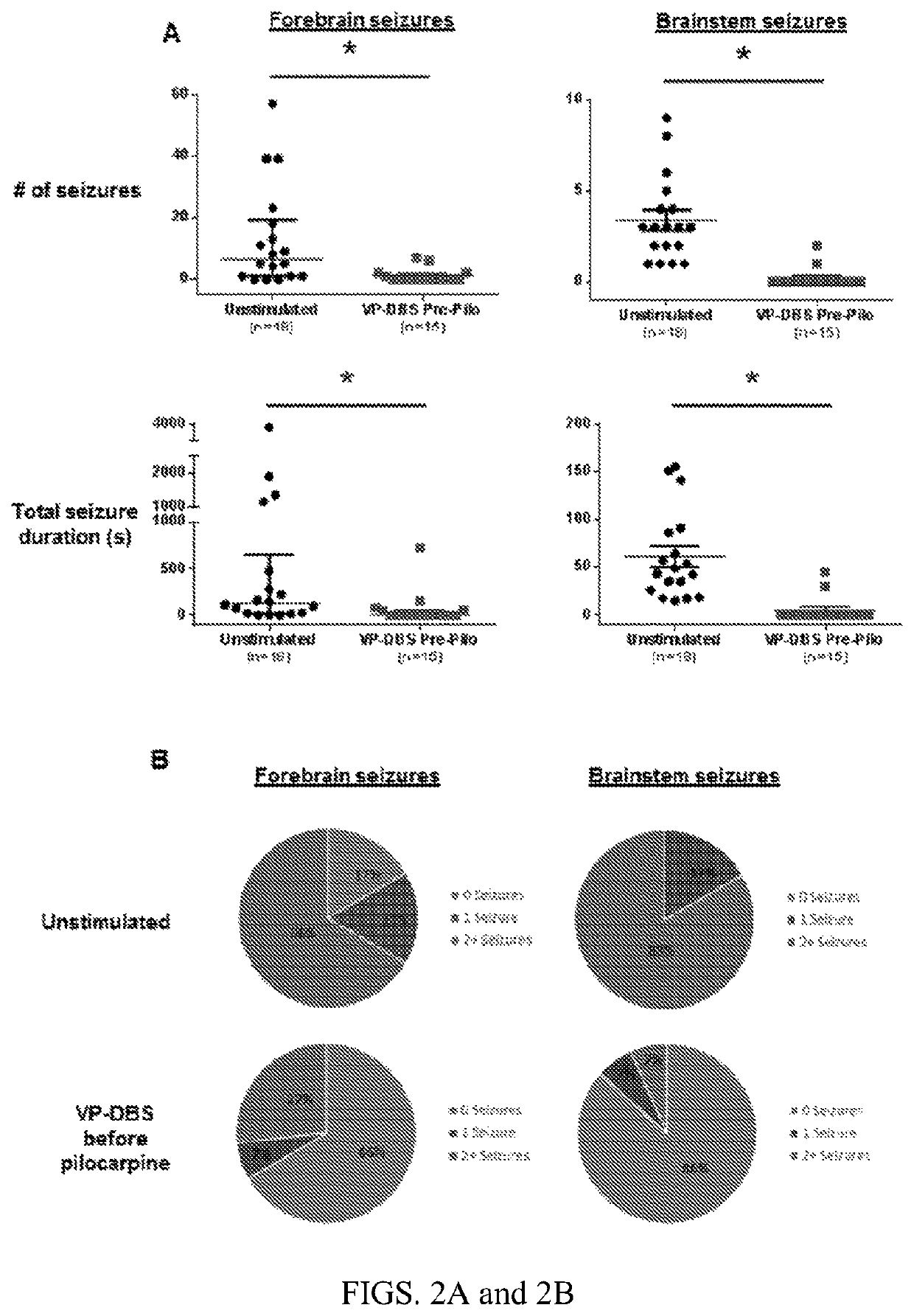Stimulation of the ventral pallidum for the treatment of epilepsy
a ventral pallidum and stimulation technology, applied in the field of stimulation of the ventral pallidum, can solve the problems of % of patients not being adequately treated, gtcss poses the greatest risk of seizure-related injuries, and % of patients are not adequately treated, so as to prevent or reduce the appearance of subsequent behavioral brain seizures, and prevent epileptiform activity and behavioral seizures
- Summary
- Abstract
- Description
- Claims
- Application Information
AI Technical Summary
Benefits of technology
Problems solved by technology
Method used
Image
Examples
example 1
Materials and Methods
[0026]Animals and Surgery
[0027]All animal use was in compliance with the guidelines of the National Institutes of Health and Albany Medical College (AMC) Animal Care Committee. Animals were purchased from Taconic (Germantown, N.Y.) and all procedures were performed during the light phase of the light dark cycle (7:00 AM-7:00 PM, lights on).
[0028]Male Sprague Dawley rats weighing 225-350 g were anesthetized with 2% isoflurane using an inhalant system (Harvard Apparatus, Mass., USA) in a stereotaxic frame (David Kopf Instruments, Calif., USA). Body temperature was maintained at 37° C. throughout the surgery (Harvard Apparatus, Mass., USA). After, burr holes were made in the cranium according to the target brain coordinates. Stainless steel twisted wire electrodes (125 μm diameter, Plastics One, Va., USA) were implanted bilaterally in the VP (from bregma: 0.3 mm posterior, 2.5 mm lateral, and 7.0 mm ventral from dura) or the STN (from bregma: 4.16 mm posterior, 2.4...
PUM
 Login to View More
Login to View More Abstract
Description
Claims
Application Information
 Login to View More
Login to View More - R&D
- Intellectual Property
- Life Sciences
- Materials
- Tech Scout
- Unparalleled Data Quality
- Higher Quality Content
- 60% Fewer Hallucinations
Browse by: Latest US Patents, China's latest patents, Technical Efficacy Thesaurus, Application Domain, Technology Topic, Popular Technical Reports.
© 2025 PatSnap. All rights reserved.Legal|Privacy policy|Modern Slavery Act Transparency Statement|Sitemap|About US| Contact US: help@patsnap.com



